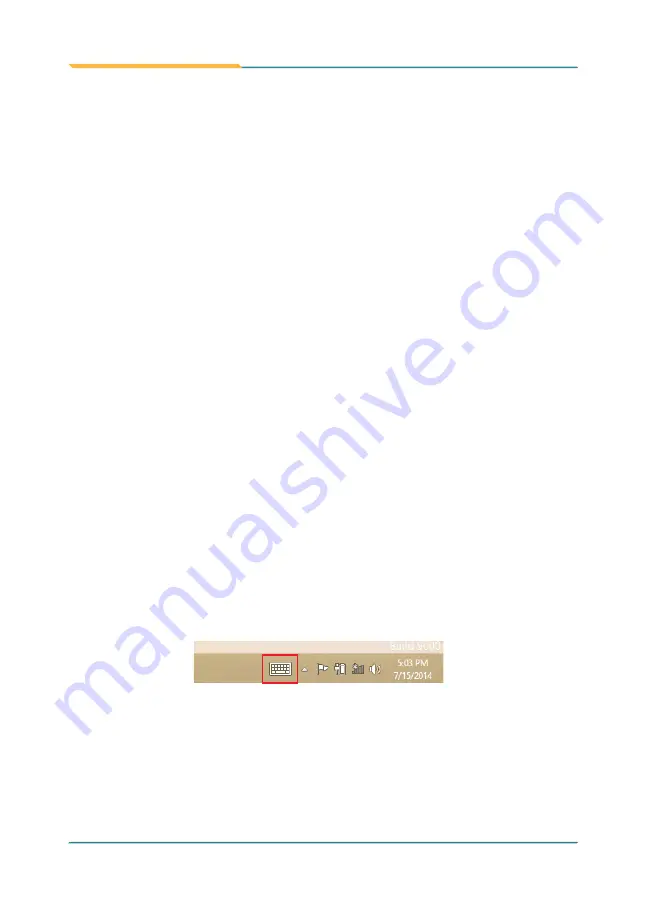
- 22 -
Using the Computer
3.1 Using Touch Screen
The computer comes with a projected capacitive touch screen. Touch control is
the main way and an intuitive way to interact with the computer. Users are able
to manipulate icons, graphic buttons, menus, property sheets, the on-screen
keyboard or any on-screen items with touch control. This chapter will walk you
through the basic operations for touch control.
3.1.1 Projected Capacitive Touch
Unlike the resistive touch, the projected capacitive touch works by the change
of capacitance when a conductive object, such as a finger, contact the touch
screen. Hence it requires only a human finger and zero force to trigger actions
from the projected capacitive touch screen. And no calibration is needed.
If the computer runs Windows 7/8, the projected capacitive touch screen is
ready to function when the computer is delivered. No driver is needed.
3.1.2 Text Input
The computer doesn't have a physical keyboard to receive user's text input. To
input text on the computer, it relies on either an external USB keyboard, or the
"on-screen keyboard", or the Windows-featured handwriting recognition.
3.1.2.1 On-screen Keyboard
An "on-screen keyboard" is a virtual keyboard with all the standard keys. With
Windows you can use either a touch keyboard or thumb keyboard to facilitate
text input. To open the Windows on-screen keyboard:
1. Tap the keyboard icon on the Windows taskbar.
2. The
Input Panel
opens in either keyboard mode or handwriting mode,
according to your previous use. Tap the icon in the lower right corner to
switch between the modes.
Summary of Contents for TIG97
Page 1: ...TIG97 9 7 Intel Celeron N2930 Rugged Tablet PC User s Manual Version 1 0 2014 09...
Page 2: ...II This page is intentionally left blank...
Page 3: ...i Revision History Version Date Descriptions 1 0 2014 09 Initial release...
Page 17: ...1 1 Chapter 1 Introduction Chapter 1 Introduction...
Page 23: ...7 Introduction 1 4 Dimensions 258 260 21 200 26 22 5 24 30 6 197 95 A A Unit mm...
Page 24: ...8 This page is intentionally left blank...
Page 25: ...9 2 Chapter 2 Getting Started Chapter 2 Getting Started...
Page 37: ...21 3 Chapter 3 Using the Computer Chapter 3 Using the Computer...
Page 51: ...35 4 Chapter 4 Utilities Chapter 4 Utilities...






























